TLDR The document concludes that understanding hair structure is key to diagnosing hair abnormalities and recommends gentle hair care for management.
The 1987 document provides a detailed examination of hair shaft abnormalities, categorizing them into fractures, irregularities, twisting, and extraneous matter. It describes specific conditions like trichorrhexis nodosa, trichothiodystrophy, and Netherton's syndrome, which can lead to hair breakage and loss. The paper also discusses the effects of metabolic disturbances, illnesses, and trauma on hair structure, including conditions like trichotillomania and pili torti. Fungal and bacterial infections affecting the hair, such as tinea capitis and trichomycosis axillaris, are also covered, with diagnostic and treatment options outlined. The document emphasizes the importance of recognizing these abnormalities for proper diagnosis and management, and it includes references to studies on related syndromes and treatments for alopecia. Notably, it mentions a study by Quaba and Wallace on the risk of malignant melanoma in patients with congenital nevocellular nevi and a comparison of suture types in scalp reduction by Nordstrom and Nordstrom. Kabaker et al.'s work on treating alopecia with tissue expansion is also highlighted. Overall, the document underscores the need for understanding the structural variations in hair for diagnosing abnormalities and suggests gentle hair care to manage these conditions.
Cited in this study
7 / 7 results
15 citations
,
August 1985 in “Archives of dermatology” Tretinoin lotion can remove hair casts, which come from a specific part of the hair follicle and can be classified into two types.
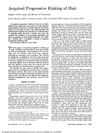 33 citations
,
August 1985 in “Archives of Dermatology”
33 citations
,
August 1985 in “Archives of Dermatology” Acquired Progressive Kinking of Hair is likely an early sign of male pattern baldness.
13 citations
,
January 1985 in “International Journal of Dermatology” The document found differences in lesion distribution and microscopic features among trichostasis spinulosa and similar skin conditions.
28 citations
,
January 1985 in “Journal of the American Academy of Dermatology” A girl with citrullinemia developed pili torti, suggesting a link between the hair condition and the metabolic disorder.
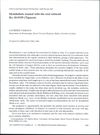 24 citations
,
July 1983 in “Clinical and Experimental Dermatology”
24 citations
,
July 1983 in “Clinical and Experimental Dermatology” Tigason improved hair growth in a boy with monilethrix without side effects.
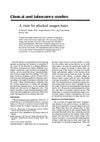 17 citations
,
August 1979 in “Journal of The American Academy of Dermatology”
17 citations
,
August 1979 in “Journal of The American Academy of Dermatology” A new staining method helps tell growing from resting hairs to diagnose hair loss.
 666 citations
,
September 1977 in “British Journal of Dermatology”
666 citations
,
September 1977 in “British Journal of Dermatology” Common baldness, also known as Androgenetic Alopecia, is caused by a combination of genetic factors and hormones called androgens.
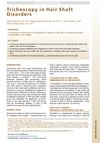 36 citations
,
October 2018 in “Dermatologic Clinics”
36 citations
,
October 2018 in “Dermatologic Clinics” Trichoscopy is a useful tool for diagnosing hair disorders without pulling out hair.
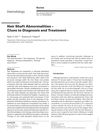 44 citations
,
January 2005 in “Dermatology”
44 citations
,
January 2005 in “Dermatology” Hair problems can be caused by genetics or the environment, and treatment should focus on the cause and reducing hair damage.
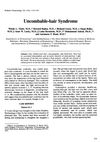 12 citations
,
November 1987 in “Pediatric dermatology”
12 citations
,
November 1987 in “Pediatric dermatology” Four children had unmanageable pale blond hair due to uncombable-hair syndrome.
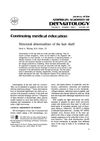 126 citations
,
January 1987 in “Journal of The American Academy of Dermatology”
126 citations
,
January 1987 in “Journal of The American Academy of Dermatology” The document concludes that understanding hair structure is key to diagnosing hair abnormalities and recommends gentle hair care for management.








